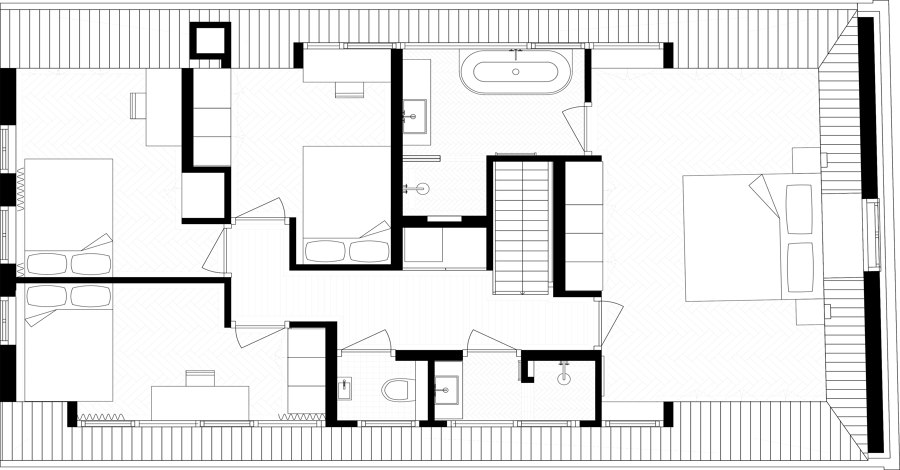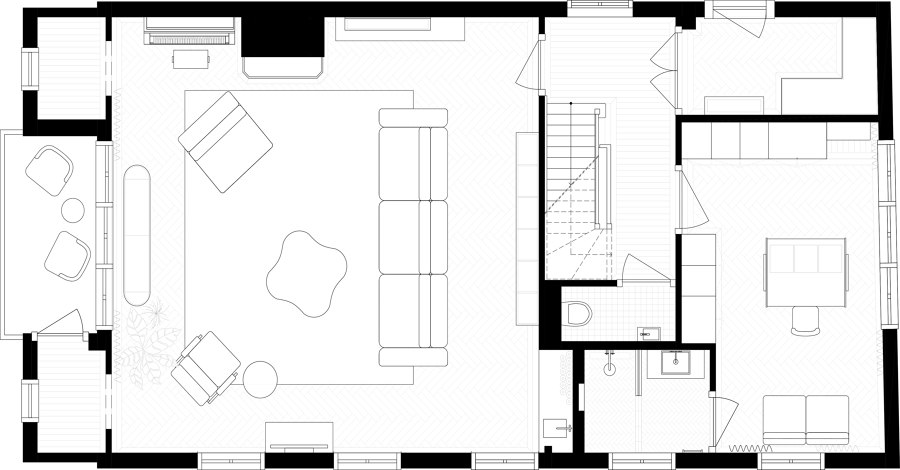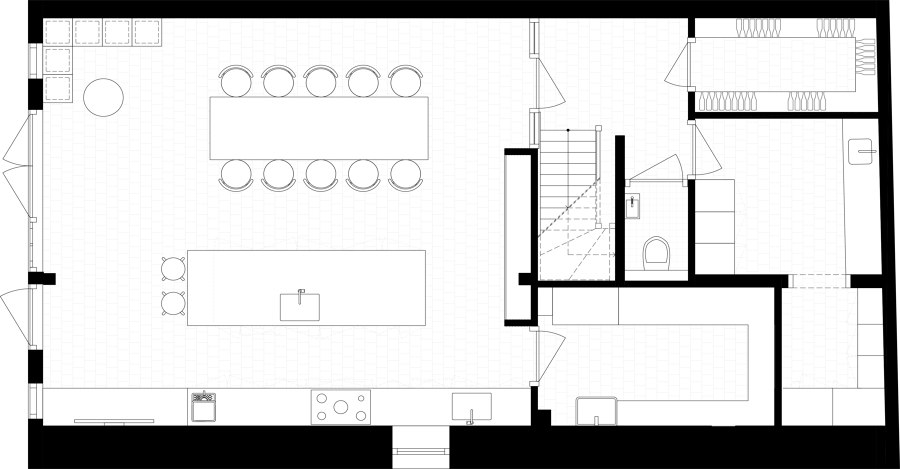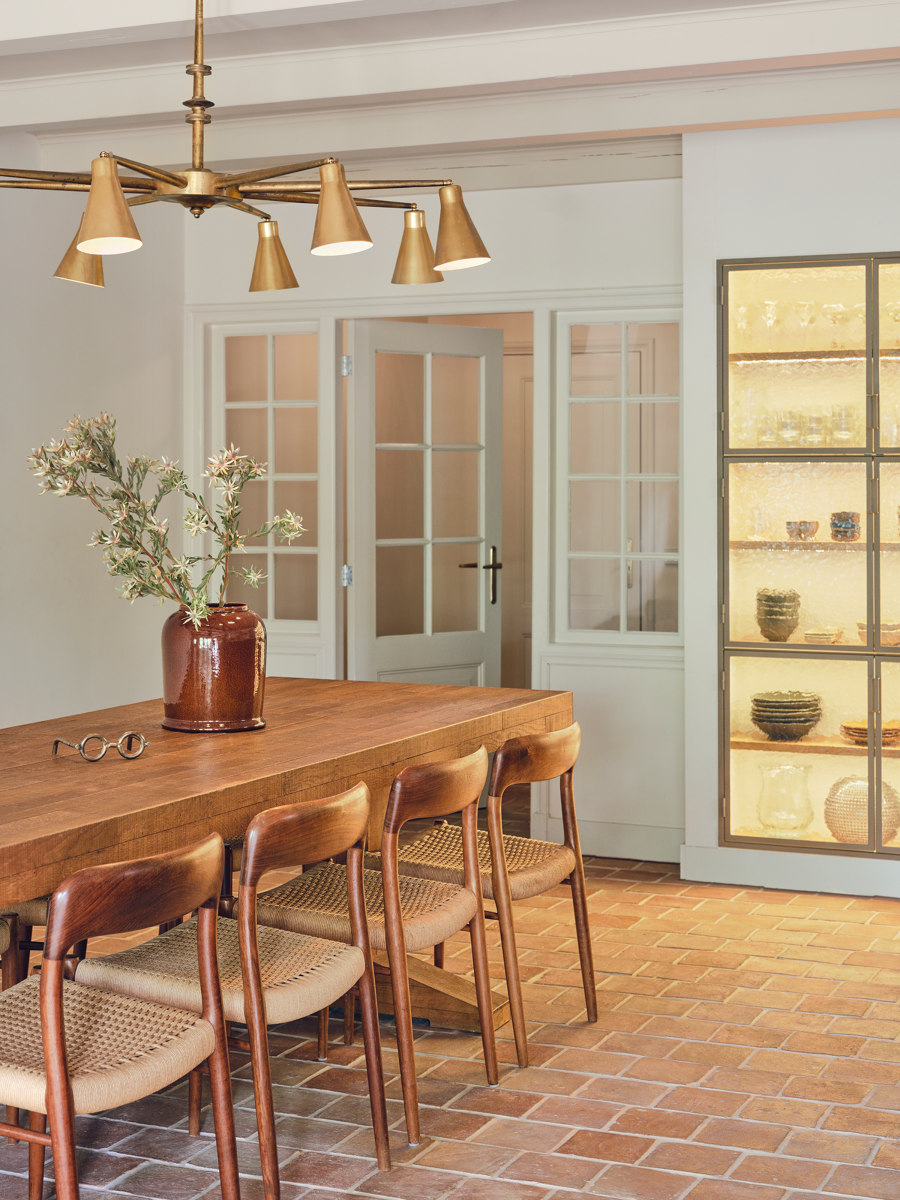
Photographer: Maarten Willemstein
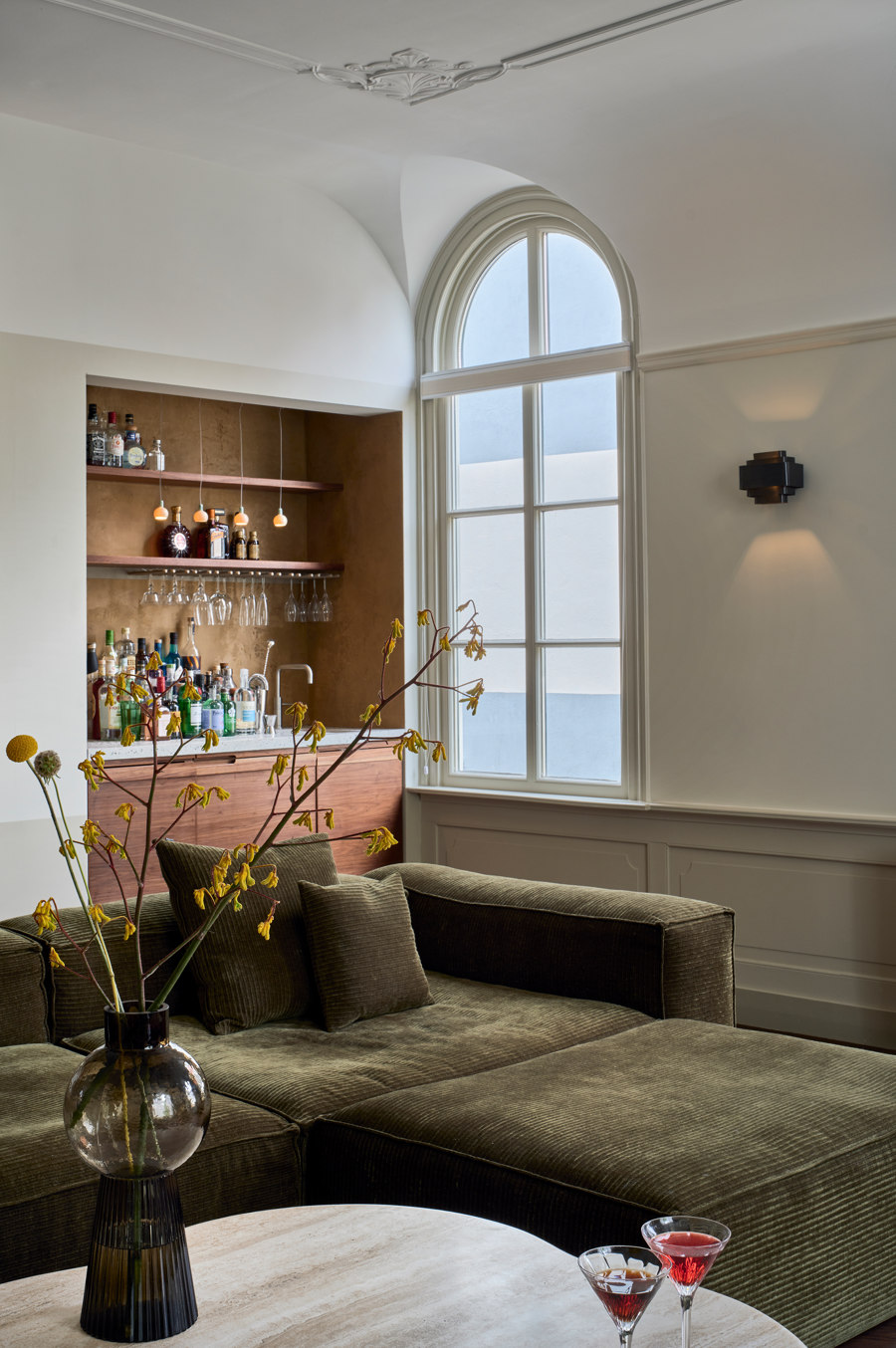
Photographer: Maarten Willemstein
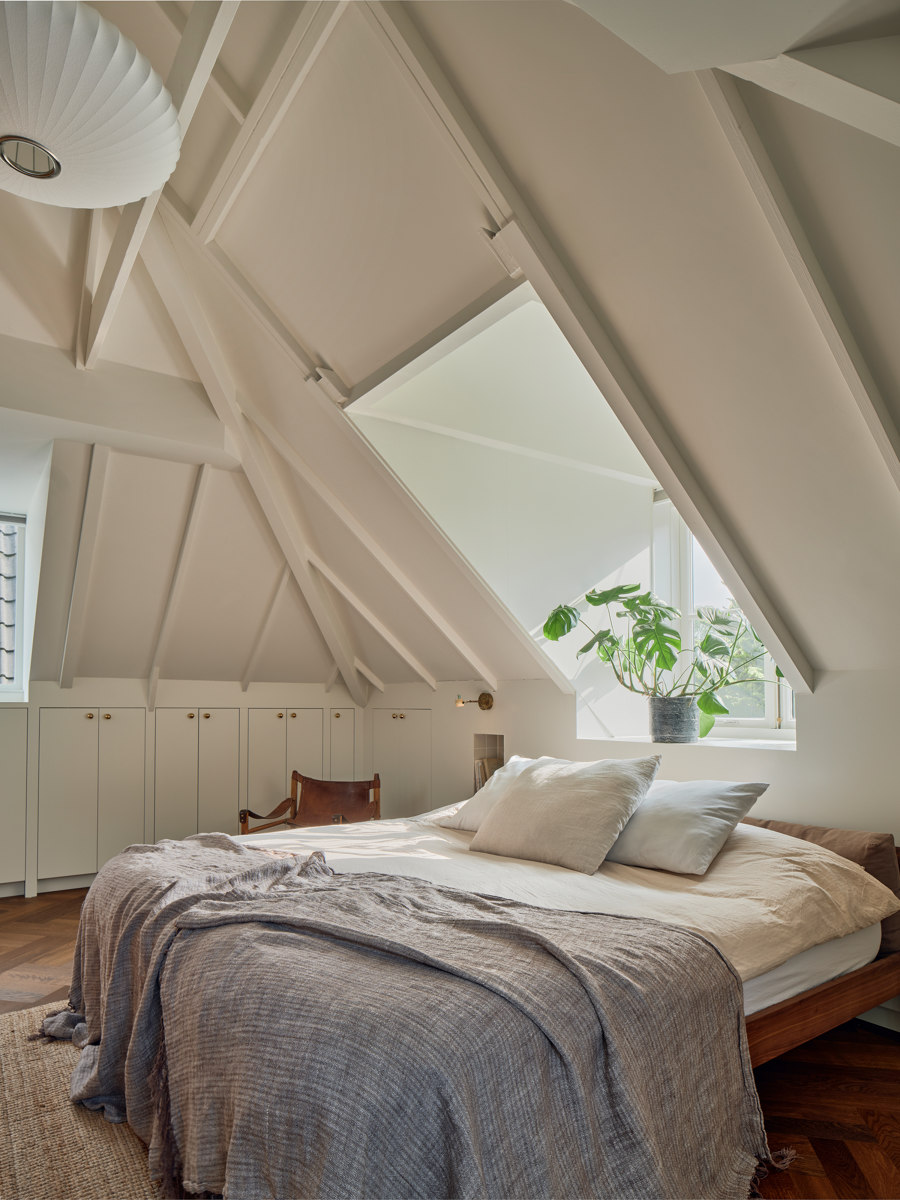
Photographer: Maarten Willemstein
In the north of Amsterdam, a traditional ‘’Dijkhuis’’ (dyke house) has been transformed into a family home by Studio Modijefsky. This kind of building, as you might have guessed, is built next to a dyke. As building a dyke raises the ground level, it means that houses around it have a back area (and garden) at the lower, original level. This causes a difference in height and light that poses design challenges and creative opportunities in equal measure - especially in such a traditional house where a balance must be struck between respecting heritage and introducing modern touches.
To create an interior that fits the original architecture while freshening it up, the spatial qualities of each living area were assessed and the properties of height, light and each building structure and window shape were maximised. Fruits of this approach are perhaps most visible in the spacious kitchen and dining area at the back of the house. A low beam ceiling draws you into an intimate space, where a large table makes it easy for the family to come together for a long meal or simply enjoy the view over the garden through wide French windows. In the kitchen itself a terrazzo kitchen top is matched with detailed wooden cabinets on a terracotta tiled wooden floor and a light custom porcelain cabinet made of glass, wooden profiles and white tiles.
Upstairs from the kitchen the entrance hallway is on the same level as the dyke. Across the hall is a toilet decorated with square off-white tiles: glossy on the wall, matt tiles on the floor. Further furnishings include wooden painted plinths, purple marble and an oak wooden toilet cabinet with brass details.
Turning right, you enter the living room, the most lavish space in the house. Light streams in through tall arched windows that give the curved, high ceiling with art deco decorations a spacious and welcoming feel. Both the ceiling and the walls have been painted in three hues of white to enhance the room’s architectural elements. In a room with so much natural light, darker colours could be used to dramatic effect, such as on the dark herringbone floor. But all eyes will here be drawn to a monolithic walnut cabinet whose shape mirrors the windows opposite it. A large green sofa and a built-in cocktail bar with a terrazzo top make this a room where you can relax from dusk to dawn.
Elsewhere on the ground floor, there’s a study that also functions as a guest room. Built-in storage cabinets have functional and aesthetic benefits: they add some character and provide clothing storage for residents and guests. Guests can freshen up in the white en-suite bathroom decorated with off-white rectangular tiles in both glossy and matt finishes, travertine, brass, a mirror, and an oak wooden bathroom cabinet.
The first floor hosts four bedrooms, two bathrooms and a separate toilet. To create enough space for these living arrangements, two dormer windows were installed that run along two thirds of the length of the roof. In contrast to downstairs, the floors here are lighter, with brighter colours on the walls to create a serene atmosphere. On the bedroom ceilings you’ll find details of the original beamed roof. Both bathrooms have a travertine back splash and are tiled with upright rectangular glossy tiles on the walls, and matt tiles in a herringbone pattern on the floor. Herringbone returns in the double plank parquet in the bedrooms, but in the corridors this changes into straight planking to give the vertical dimensions of the house more character. This symbolizes the way Studio Modijefsky has paid tribute to the building’s heritage while filling it with contemporary style.
Design team:
Studio Modijefsky; Esther Stam, Moene van Werven, Christel Willers, Aurélia De Chevigny, Ivana Stella, Beata Karlsson
Collaboration for design and execution of the kitchen unit & big living room cabinet with Koelhuis Frigo
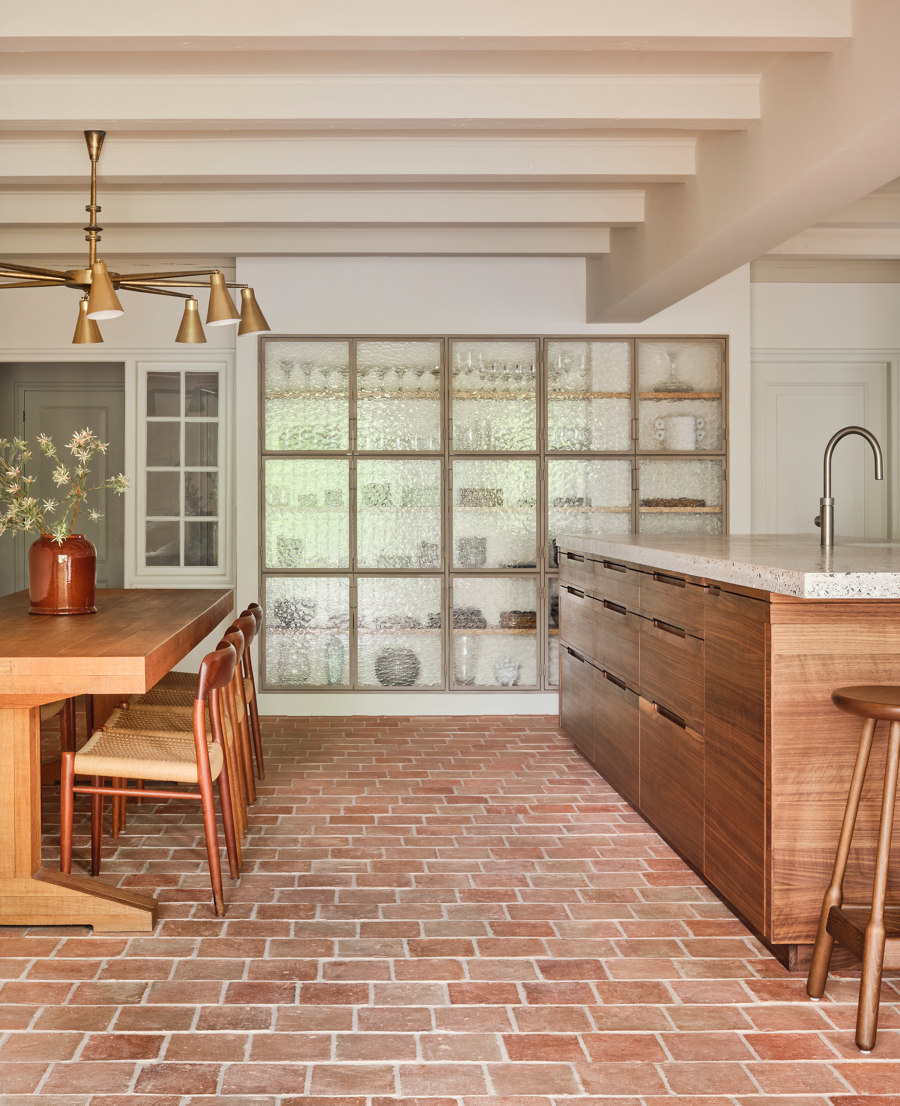
Photographer: Maarten Willemstein

Photographer: Maarten Willemstein

Photographer: Maarten Willemstein
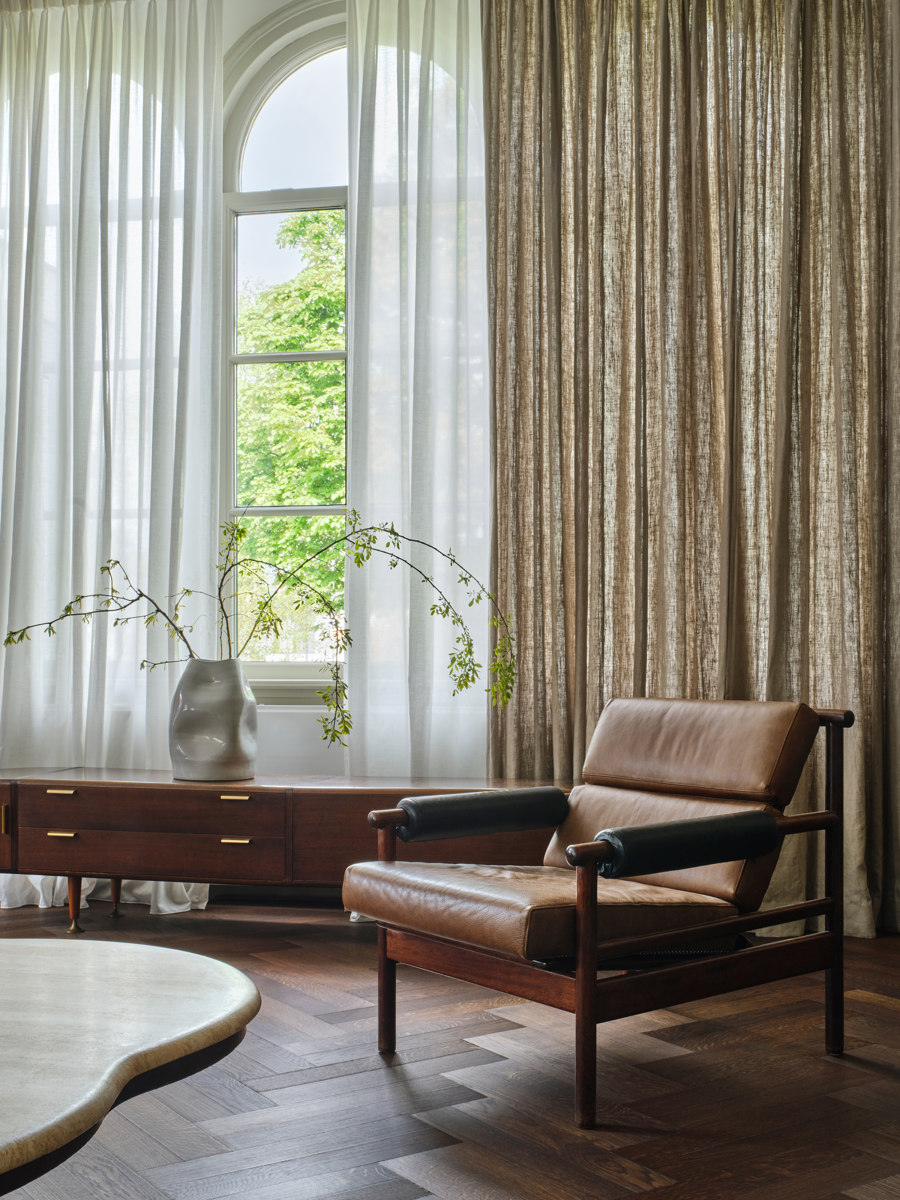
Photographer: Maarten Willemstein
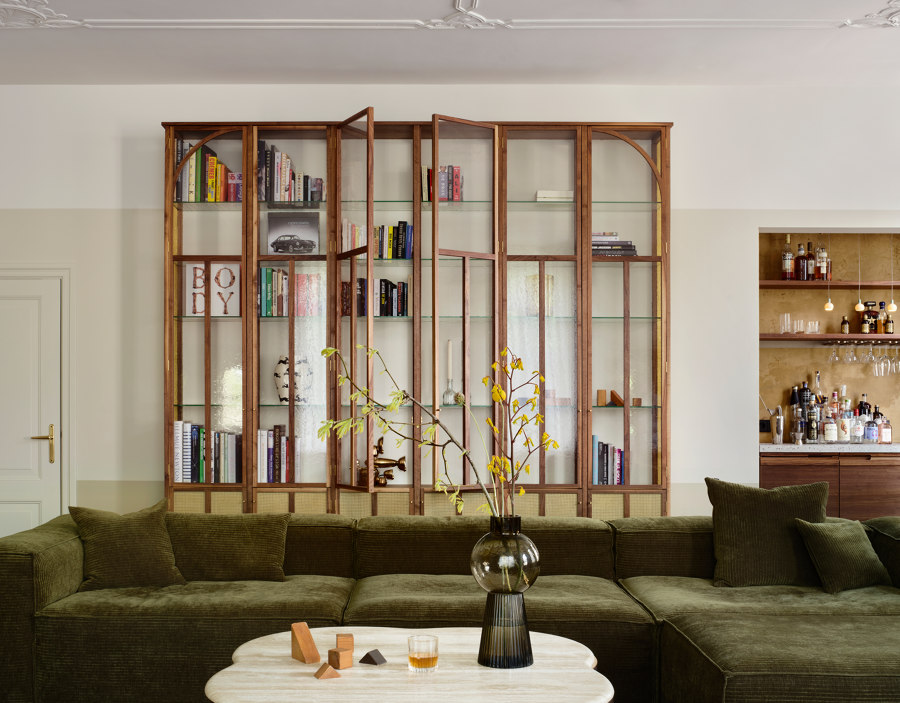
Photographer: Maarten Willemstein
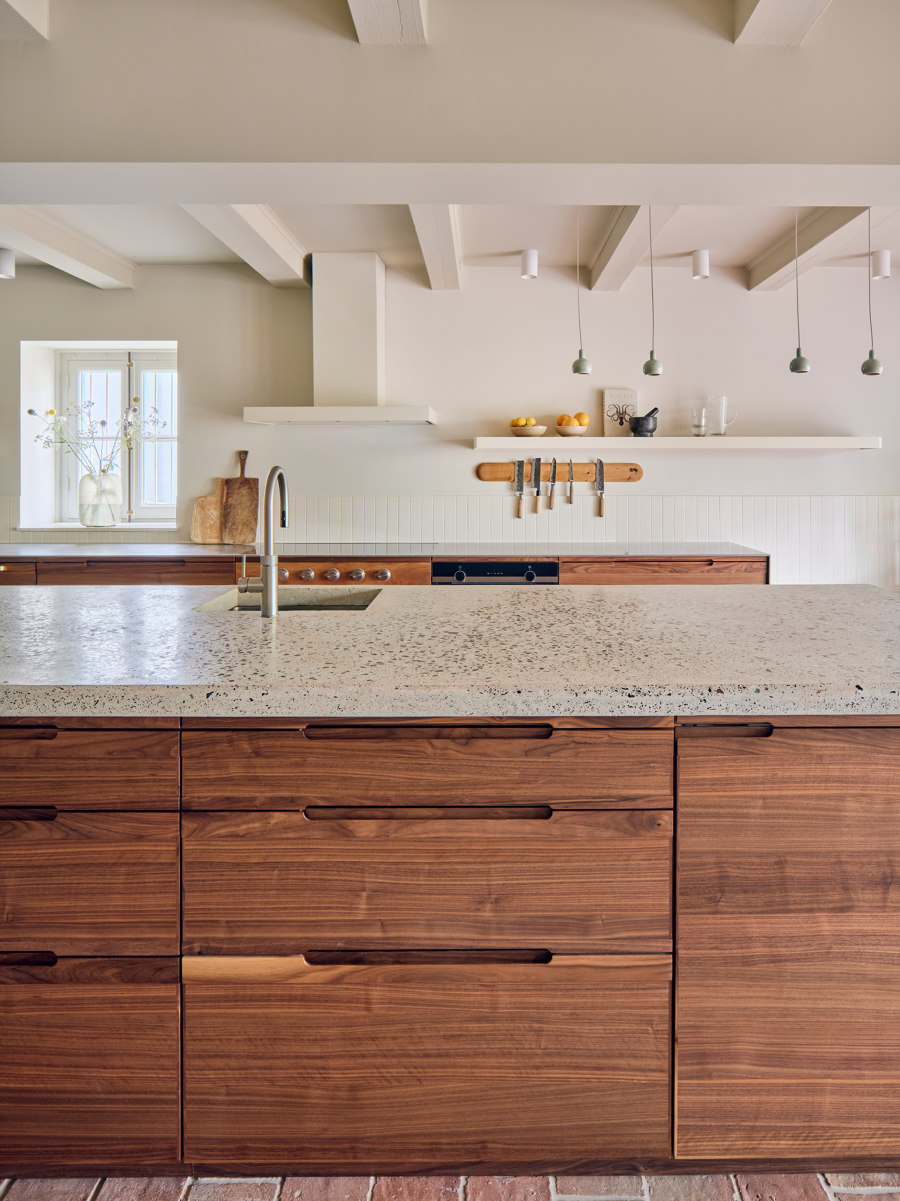
Photographer: Maarten Willemstein
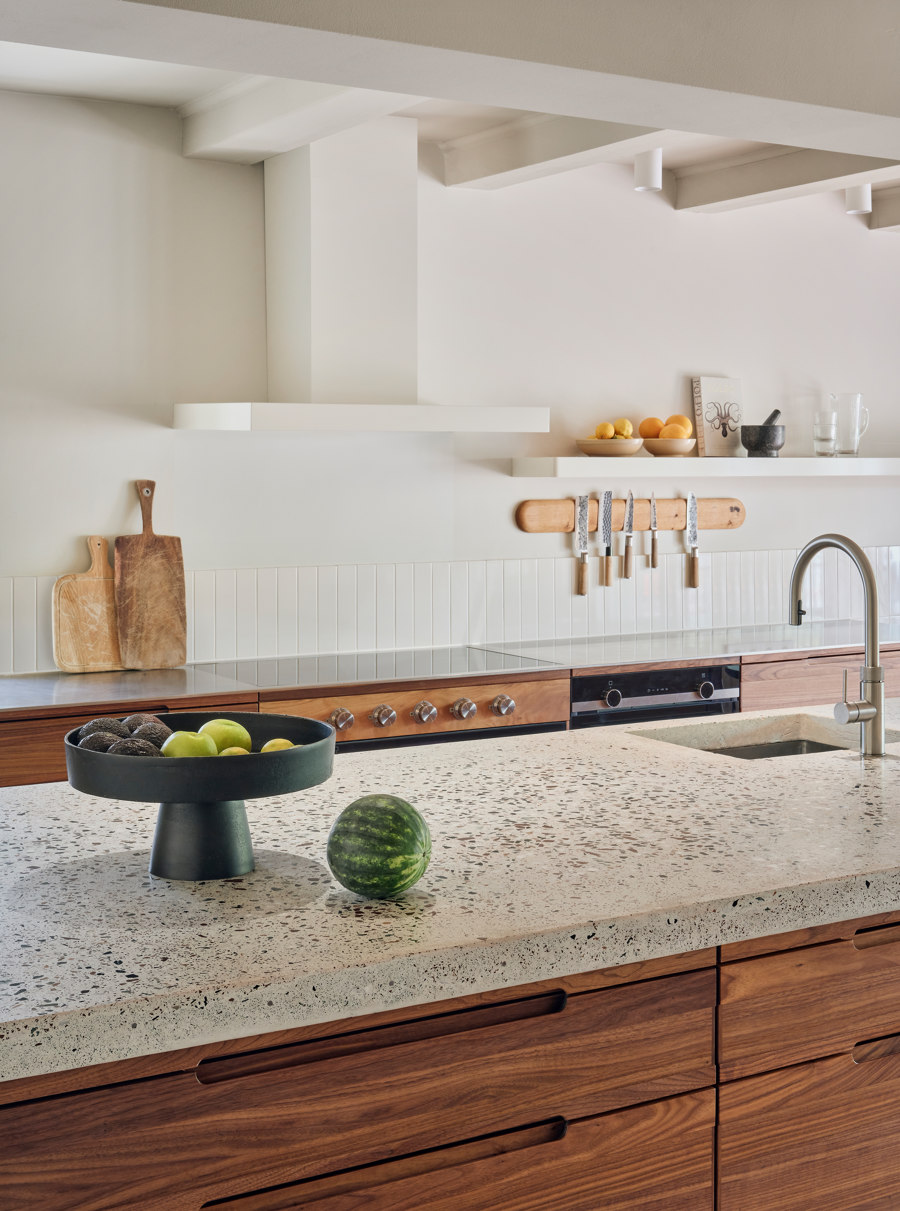
Photographer: Maarten Willemstein
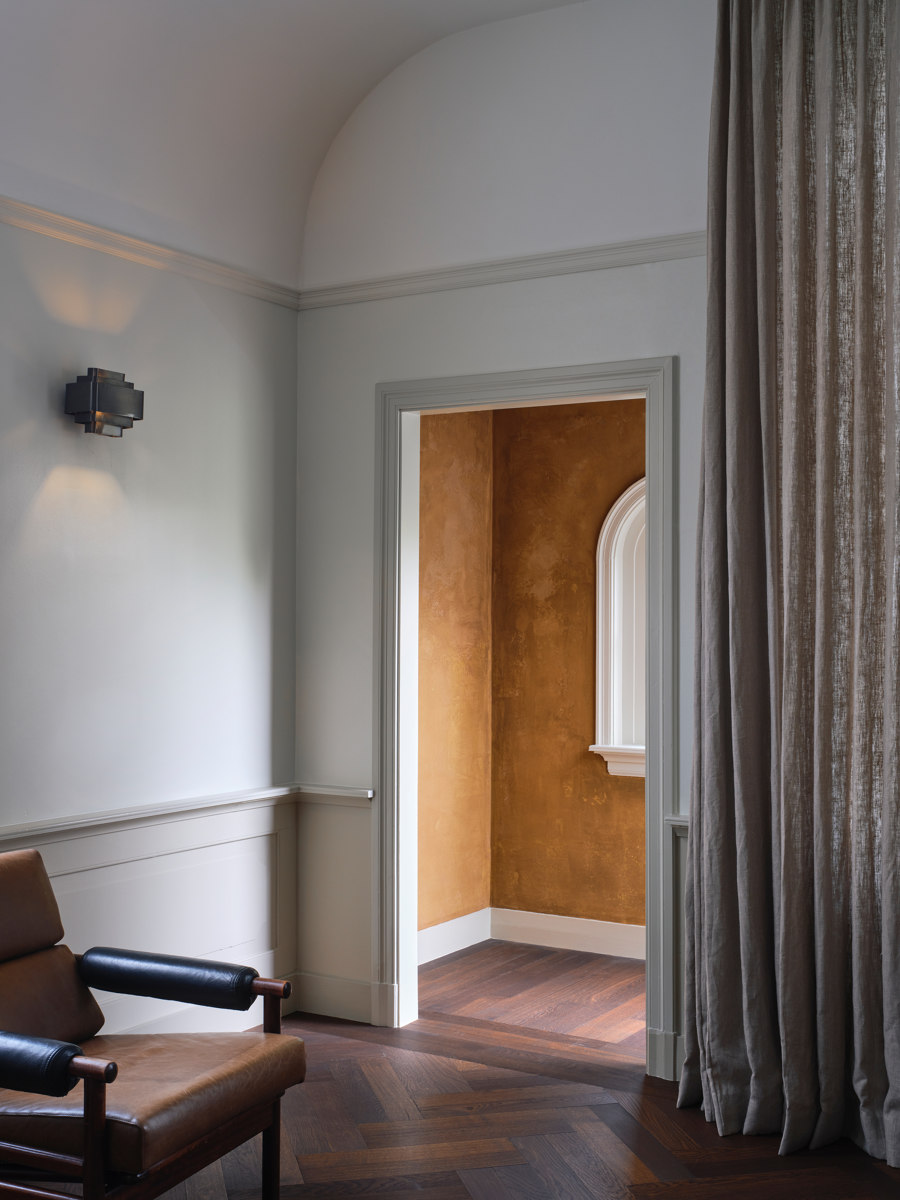
Photographer: Maarten Willemstein

Photographer: Maarten Willemstein
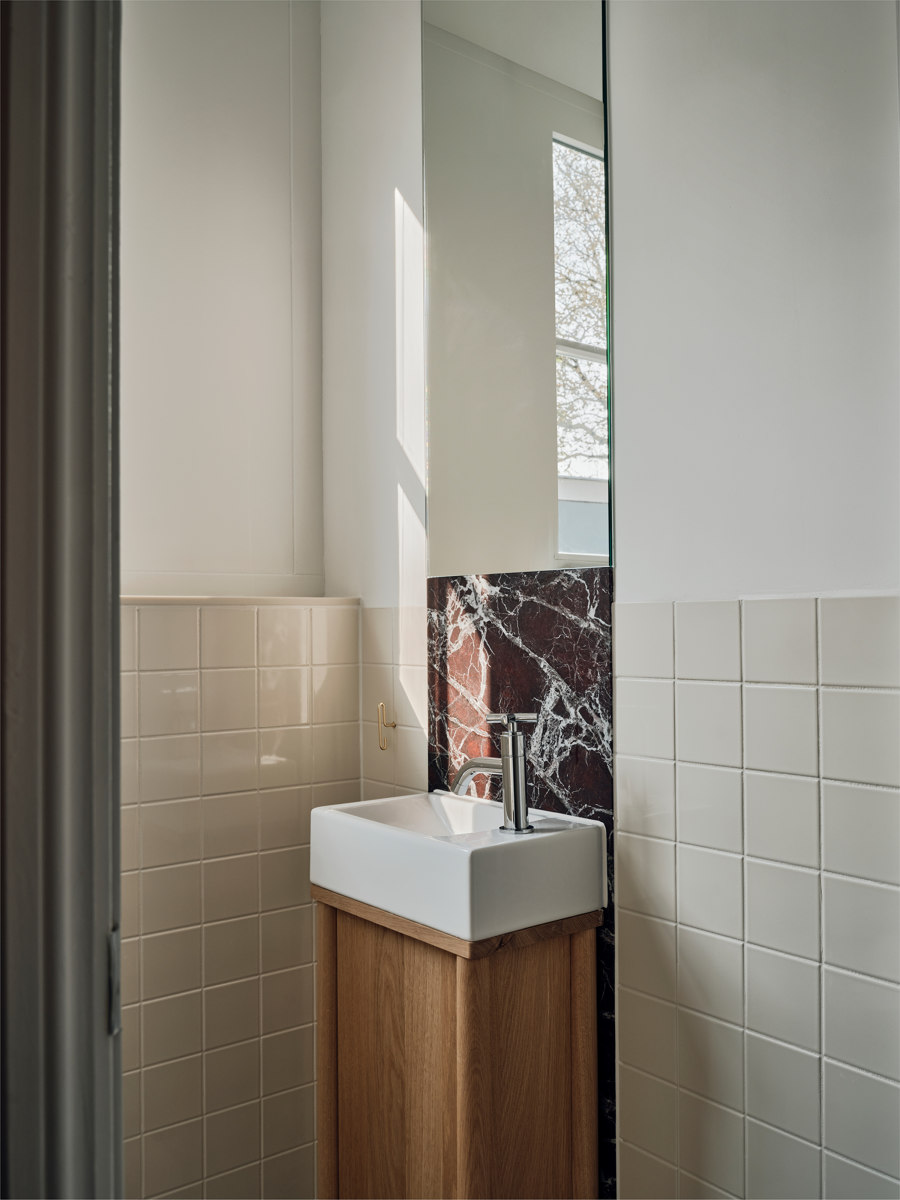
Photographer: Maarten Willemstein
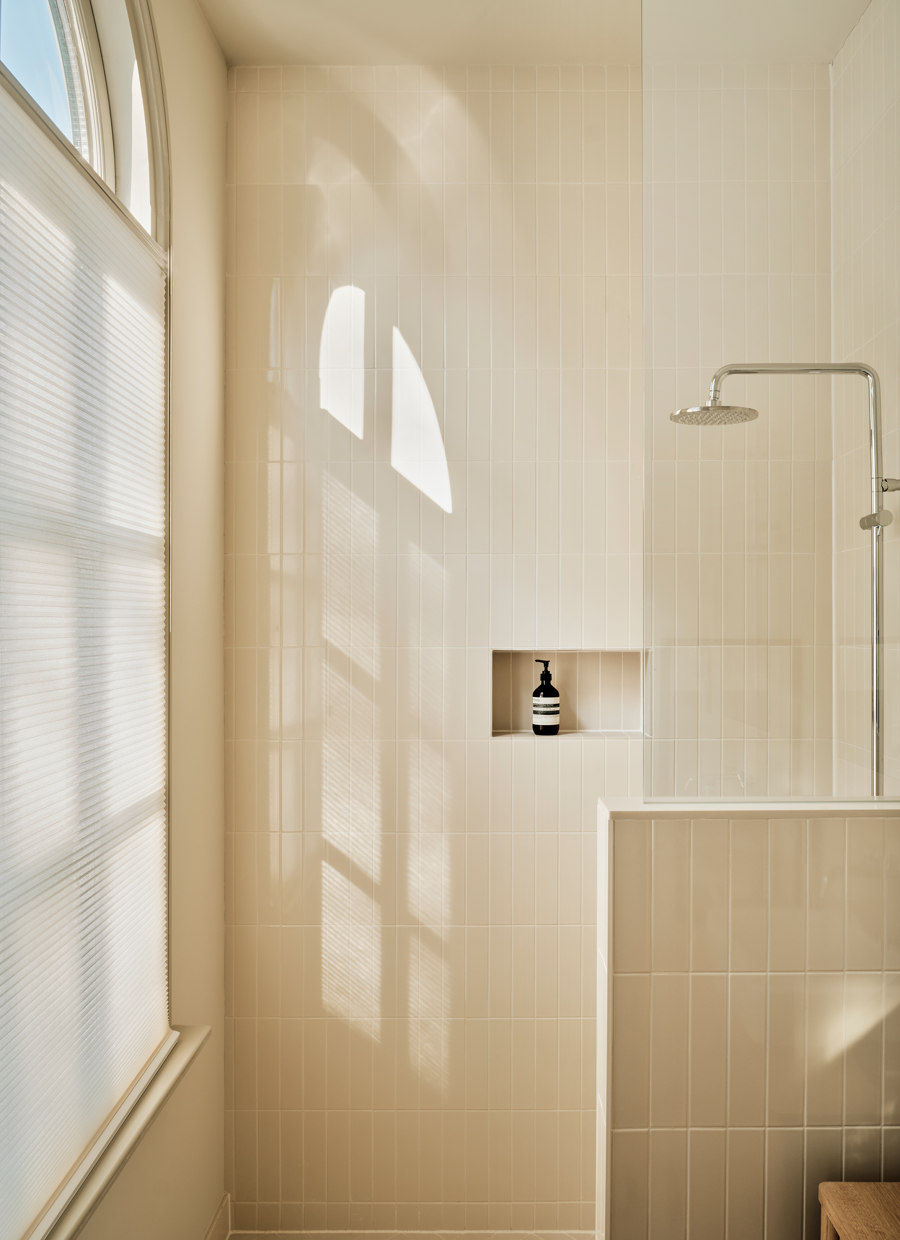
Photographer: Maarten Willemstein















